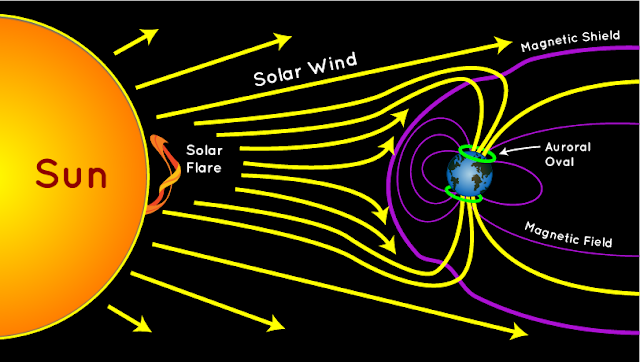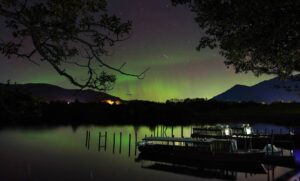IAGA Blog

I recently posted a blog post to IAGA, and I thought it would make sense to post it here as well. Got some wonderful feedback on the context image (featured), though it was the NOAA who provided it!
Aurora events on 3rd and 4th November 2021: A summary
People up and down the United Kingdom have been able to see the northern lights this month- a rare occurrence, considering that the aurora borealis are only usually visible at higher latitudes (think Iceland, or northern Finland!)
So, what has been happening up there in space? For those of you readers that do not know about the origins of the northern lights, what causes them is what is commonly known as the solar wind- a string of charged particles which stream outwards from the sun constantly in all directions. These particles then interact with the Earth’s magnetic field, causing them to curve to higher latitudes where the magnetic field lines pass through the Earth’s atmosphere. As these particles enter the upper atmosphere, they excite and ionise the upper layers of gases, which in turn causes light emission- the aurora borealis in northern latitudes, or aurora australis in southern latitudes. This is not unique to our planet- Jupiter has aurora as well, for example.
Demonstrating how the aurora form. Particles from the Sun are deflected towards the poles. The early November event also saw enhanced aurora in the southern hemisphere, including sightings in New Zealand. Credit: NOAA
The widespread aurora seen on the week of the 1st of November was caused by exciting solar activity. The sun released an X class flare (the highest class) on Thursday 28th October, and we saw some geomagnetic activity here on Earth on the 30th-31st October (though, according to the British Geological Survey, most of the effects of the flare and the associated coronal mass ejection missed the Earth to the south). The 03-04 November event was mostly due to a coronal mass ejection and M-class flares (the second highest class) which occurred on the 2nd of November on the surface of the sun. Though the speed of propagation through the solar system is very fast (hundreds of km per second, in fact), it still takes several days for the effects to reach us on Earth. The effects were strong and did interact with the Earth’s magnetic field rather than missing it (in 3D space, it is very likely that any given event will not interact with us, considering the Earth is so small). In addition, the direction of the IMF (interplanetary magnetic field) was in the direction of the Earth’s magnetic field, leading to a strong connection between the two and stronger space weather impacts.
On Earth, we experienced large differences in the geomagnetic field compared to quiet periods, which produced a high value of the Kp index (which we use to quantify the changes in the magnetic field).

Photo of Northern Lights over Derwent Water, Cumbria, early November 2021. Image credit: Owen Humphries (PA)
The northern lights are, however, hit and miss. If there is cloud cover, or you are looking at the wrong time or in an area with a lot of light pollution, you may not see the aurora even if they are directly overhead. I found this, to my chagrin, when I went looking for this particular event with another colleague working in geomagnetism. However, when this happens to you, you simply need to come back another time. Aurora are rare at lower latitudes, but there will be another opportunity. Sometime in the future, you may yet see a faint, translucent green light on the northern horizon.
Samuel Fielding is a first year PhD candidate at the University of Edinburgh, working on the real-time forecasting of space weather using machine learning and satellite data. He can be contacted by email at S.A.Fielding-1@sms.ed.ac.uk.





Recent comments